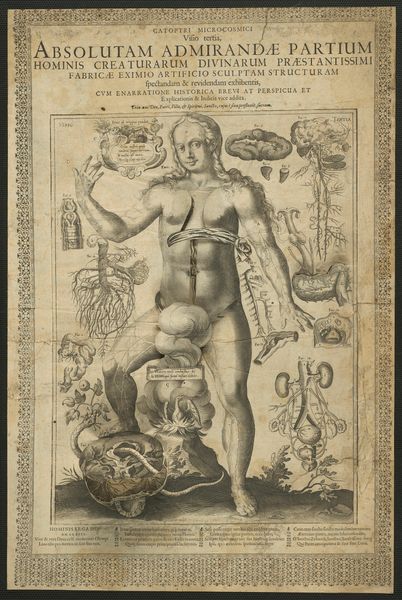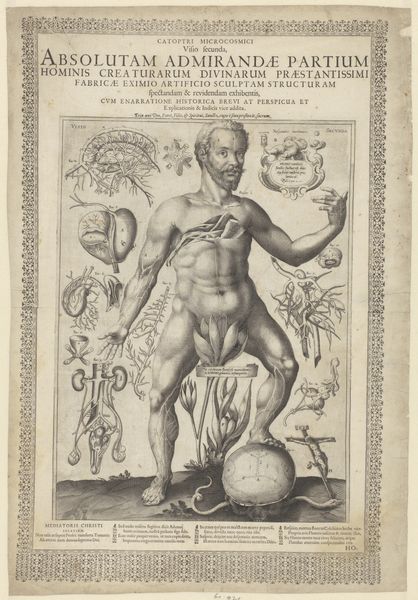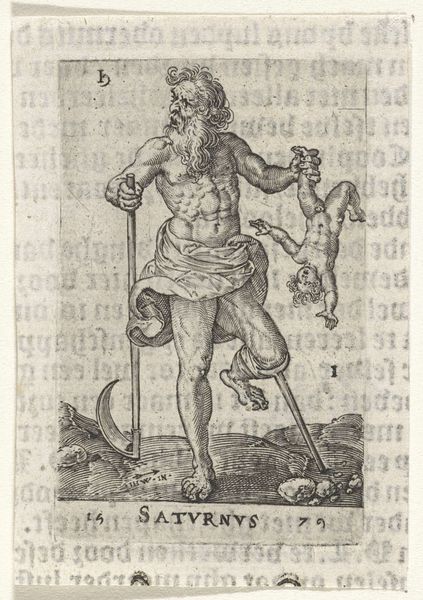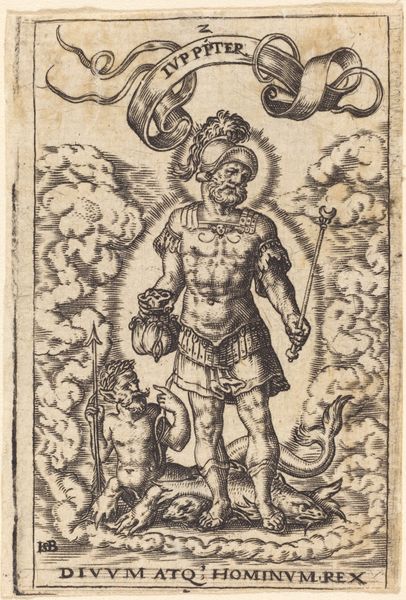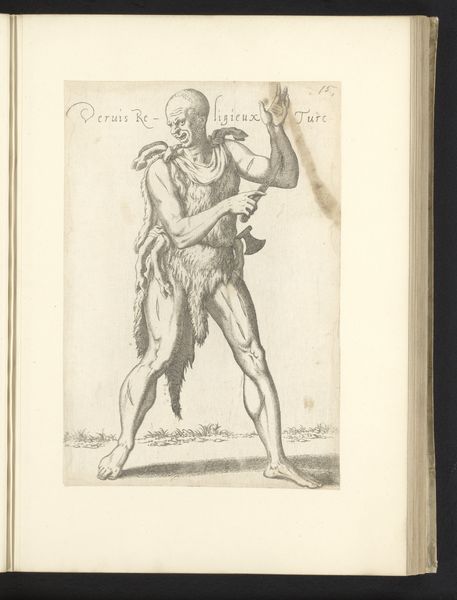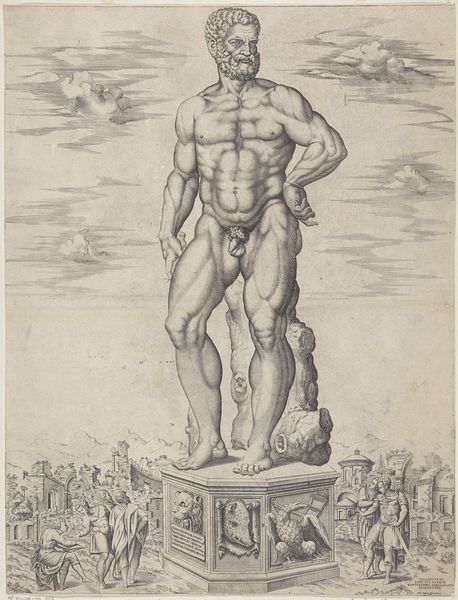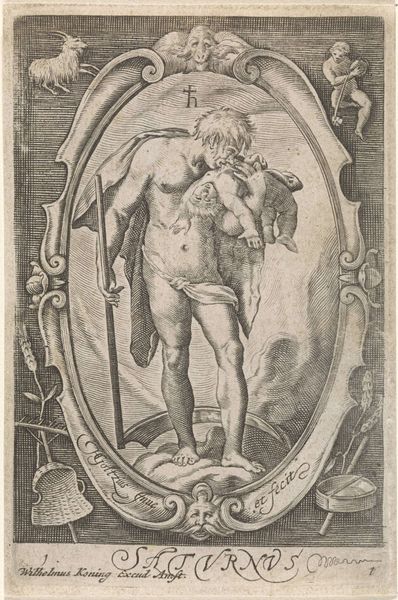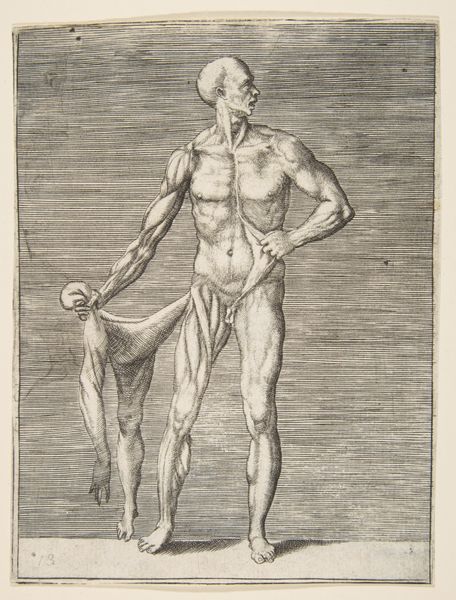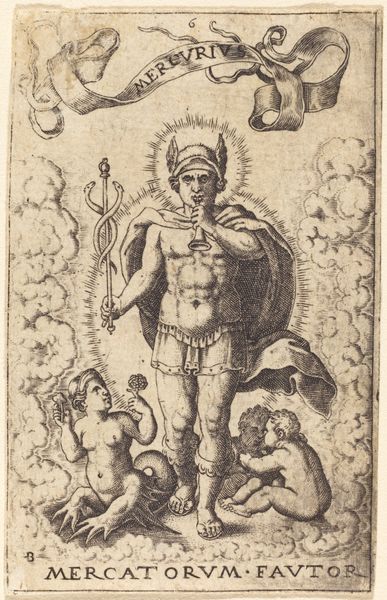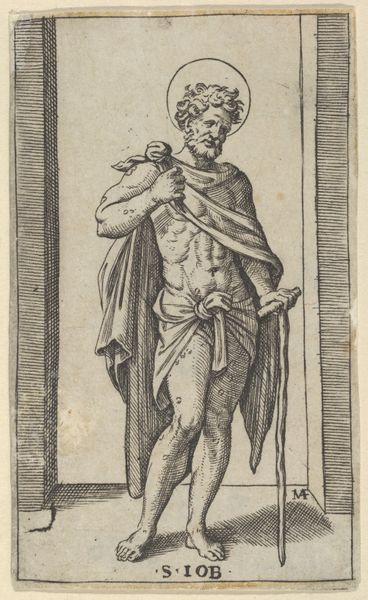
Dimensions: 359 × 265 mm (engraved sheet); 508 × 340 mm (letterpress printed secondary support)
Copyright: Public Domain
Editor: So, this is "Second Vision, from Mirrors of the Microcosm" by Lucas Kilian, created in 1613. It’s an engraving on paper. The anatomical details are striking, but the placement of the figures and organs is a bit unnerving. What do you make of it? Curator: It's a powerful image, isn't it? Placed in its historical context, this wasn't just about anatomical accuracy. Consider the role of anatomical illustration during the Renaissance. These images were deeply enmeshed with philosophical and religious ideas about the body as a microcosm. Editor: A microcosm? Curator: Exactly! The idea that the human body mirrored the universe. Kilian’s work here exists at a fascinating intersection. On one hand, it served as a form of early scientific dissemination, visualizing human anatomy. But on the other, it perpetuated symbolic understanding. Think about how public dissections, the theatre of anatomy, served not only scientific curiosity but moral instruction, reminding viewers of their mortality. The placement isn't accidental, it speaks to an order...a cosmic one! Editor: That's fascinating. So the almost bizarre arrangement and symbolism were perhaps intentional, part of a bigger socio-cultural narrative around the body? Curator: Precisely! The body became a site of not only medical knowledge, but a site of moral and societal regulation through such imagery. Editor: It really does shift my perspective to think about it as more than just a visual representation of the body but as an expression of power and control during that time. Thanks for your perspective. Curator: And thank you for prompting such engaging questions. It's rewarding to reconsider the social implications of these seemingly straightforward historical illustrations.
Comments
No comments
Be the first to comment and join the conversation on the ultimate creative platform.
